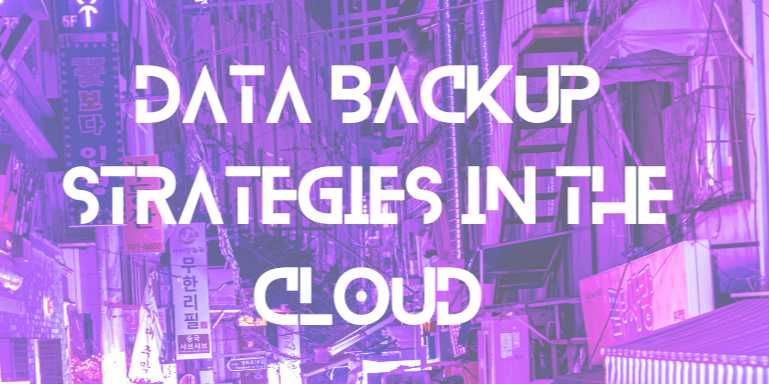Data Backup Strategies in the Cloud

📒 Chapter 4: Security, Compliance & Backup Governance
🔐 Introduction
In the realm of cloud computing, safeguarding data is
paramount. This chapter explores the critical aspects of security, compliance,
and governance in cloud backup strategies, providing insights into best
practices and tools to protect sensitive information and meet regulatory
requirements.
🛡️ Section 1: Cloud
Backup Security Fundamentals
🔹 Encryption
- At-Rest
Encryption: Protects data stored on disk using encryption standards
like AES-256.
- In-Transit
Encryption: Secures data during transmission using protocols like TLS
1.2 or higher.
- Client-Side
Encryption: Encrypts data before it leaves the client’s environment,
ensuring end-to-end security.
🔹 Identity and Access
Management (IAM)
- Role-Based
Access Control (RBAC): Assigns permissions based on user roles to
enforce the principle of least privilege.
- Multi-Factor
Authentication (MFA): Adds an extra layer of security by requiring
multiple forms of verification.
🔹 Immutable Backups
- Write-Once-Read-Many
(WORM): Ensures that once data is written, it cannot be altered or
deleted, protecting against ransomware attacks.
📜 Section 2: Compliance
Frameworks and Standards
🔸 Common Compliance
Standards
|
Standard |
Focus Area |
Applicability |
|
ISO/IEC 27001 |
Information Security
Management |
Global |
|
ISO/IEC 27017 |
Cloud
Security Controls |
Cloud Service
Providers |
|
ISO/IEC 27018 |
PII Protection in
Cloud |
Public Cloud
Environments |
|
HIPAA |
Healthcare
Data Protection |
United States |
|
GDPR |
Data Privacy and
Protection |
European Union |
|
SOC 2 |
Service
Organization Controls |
Service
Providers |
🔸 Compliance Best
Practices
- Data
Classification: Identify and categorize data based on sensitivity and
regulatory requirements.
- Audit
Trails: Maintain logs of data access and changes for accountability.
- Regular
Assessments: Conduct periodic compliance audits to ensure adherence to
standards.TechRadar+1Google Cloud+1
🏛️ Section 3: Backup
Governance Policies
🔹 Policy Development
- Define
Objectives: Establish clear goals for data protection and recovery.
- Assign
Responsibilities: Designate roles for managing and enforcing backup
policies.
- Set
Retention Schedules: Determine how long different types of data should
be retained.
🔹 Policy Enforcement
Tools
- AWS
Backup Policies: Centralize backup management across AWS services.
- Azure
Policy: Enforce organizational standards and assess compliance at
scale.
- Google
Cloud Backup Policies: Define schedules and retention for backup jobs.AWS Documentation
🧰 Section 4: Tools and
Automation for Security and Compliance
🔸 Monitoring and Alerting
- AWS
Config: Tracks configuration changes and compliance with policies.
- Azure
Monitor: Collects and analyzes telemetry data for resources.
- Google
Cloud Operations Suite: Provides observability into applications and
infrastructure.
🔸 Automation Scripts
- Terraform:
Automate infrastructure provisioning, including backup configurations.
- Ansible:
Manage configurations and automate deployment of backup policies.
📋 Summary
Implementing robust security measures, adhering to
compliance standards, and establishing clear governance policies are essential
components of an effective cloud backup strategy. By leveraging appropriate
tools and automation, organizations can enhance data protection, ensure
regulatory compliance, and streamline backup operations.
FAQs
❓1. What are the main advantages of cloud backup over traditional backup?
Answer:
Cloud backups offer scalability, automation, geo-redundancy,
and cost-effectiveness. Unlike traditional tapes or on-premise storage,
cloud solutions allow real-time access, faster recovery, and lower maintenance
overhead.
❓2. What is the 3-2-1 backup rule, and how does it apply to the cloud?
Answer:
The 3-2-1 rule means:
- Keep
3 copies of your data
- On 2
different media
- With
1 off-site In cloud terms, this may include production data, a
version in cloud object storage, and a copy in another region or cold
archive tier like AWS Glacier.
❓3. What’s the difference between full, incremental, and differential backups?
Answer:
- Full:
Copies all data.
- Incremental:
Copies only data changed since the last backup.
- Differential:
Copies all data changed since the last full backup. Cloud systems
often combine these for storage efficiency and restore speed.
❓4. How do RTO and RPO influence cloud backup planning?
Answer:
- RTO
(Recovery Time Objective) defines how fast data must be restored.
- RPO
(Recovery Point Objective) defines how much data loss is acceptable.
Lower RTO/RPO requires more frequent backups and faster-access storage
(e.g., hot tiers).
❓5. How secure is data stored in the cloud?
Answer:
Top cloud providers offer end-to-end encryption, access control (IAM),
and compliance standards (e.g., GDPR, HIPAA, ISO 27001). Users must
still configure security properly, including encryption, access policies, and
audit logging.
❓6. Can I automate my cloud backups?
Answer:
Yes. Most platforms (AWS, Azure, GCP) support:
- Scheduled
backups
- Lifecycle
rules
- Backup
orchestration tools
- Event-driven
triggers using Lambda, Cloud Functions, etc.
❓7. How much does cloud backup cost?
Answer:
Costs vary based on:
- Storage
class (e.g., hot vs. cold)
- Data
volume
- Retention
period
- Egress
fees (for restores or cross-region) Using tiered storage and
lifecycle rules helps reduce long-term costs.
❓8. What tools or services are recommended for cloud backup?
Answer:
Popular options include:
- AWS:
AWS Backup, S3 Glacier, EBS Snapshots
- Azure:
Azure Backup Vault, Blob Archive
- GCP:
Cloud Storage Nearline/Coldline, Filestore Snapshots
- 3rd
party: Veeam, Commvault, Backblaze, Wasabi
❓9. How often should I test my backups?
Answer:
Monthly or quarterly tests are recommended to:
- Verify
data integrity
- Ensure
recovery processes work
- Train
response teams Automated DR tests are possible via scripts or CI/CD
integrations.
❓10. What happens if my cloud provider experiences an outage?
Answer:
Use multi-region or multi-cloud backup strategies to mitigate
this. Store at least one backup copy in a different region or on a different
provider to maintain business continuity.



Comments(0)